Ugali (Corn Fufu)
Ugali (Corn Fufu) – Experience African comfort food at home with this nutrient-packed cornmeal porridge. Enjoy an easy, soft, delightful, filling side dish with only three ingredients! This ugali recipe is the perfect cornmeal side dish for greens, stews, and proteins.
Delicious, filling corn meal side dishes are a staple food in restaurants and homes around the continent. All come under different aliases. Most notable are fufu corn (West Africa), couscous de maize (in French-speaking African countries), ugali (Kenya), nshima (Zambia), nsima (Malawi), and mielie pap in South Africa.
What Is Ugali?
Ugali is a thick porridge made from white maize meal cooked in water or milk until it becomes a thick dough. A piece of ugali serves as a spoon. Make a dent in the middle (swallow), and spoon a bite of draw soup (ogbono and okra soup are two examples).
This bland side dish is delightful with greens, stews, or protein. And it doesn’t overpower your delicious stew.
Recipe Ingredients
I’ve even eaten corn fufu at a friend’s place made with Jiffy cornbread mix, which I enjoyed. I’m not going to lie; sometimes, I use the Jiffy mix when cooking for one. I can just hear fufu purists shouting out HERESY! But, hey, use what you have available.
- Water: I don’t usually list water as an ingredient, but it’s essential for cooking the cornmeal. And you’ll need a pinch of salt.
- Cornmeal: Perfectly ground maize corn is readily available in Africa, but it’s another ball game abroad. Look for finely ground white cornmeal or yellow cornmeal. Corn flour or maize flour should also be available at ethnic grocery stores.
How to Make Ugali (Corn Fufu)
- Boil – Add about 4 cups of water to a large heavy-bottomed saucepan. Add ½ teaspoon of salt. Bring to a boil, remove a cup of water, and set aside. (Photo 1)
- Add Cornmeal – Stir in the cornmeal a little at a time with a wooden spoon until it’s all in the pot. Keep stirring to prevent lumps. To avoid burning, you may have to take the saucepan off the heat while removing lumps. (Photos 2-3)
- Reduce heat and cook on low until the mixture thickens. (Photo 4)
- Final Stretch – Add the remaining boiled water, reduce the heat, cover, and simmer for 10 more minutes. Add some more water if it looks like it needs it. Turn off the heat.
- Serve – Scoop out balls of the ugali mixture with a small bowl. Roll it into a ball by rolling it around the bowl. Or shape it by wrapping it in a plastic wrap. (Photos 5-8)
Note: Several have told me that wrapping it in plastic isn’t healthy. It’s up to you.
Recipe Variations
- Cornmeal swap. Millet, sorghum, cassava, and green plantains all make great fufu.
- Butter. Add a tablespoon of butter to your fufu corn to make it rich and creamy. Yum!
- Milk. Substitute the water with milk for a softer ugali. Children and older people enjoy this version because it’s easier to swallow.
Tips and Tricks
- Stir constantly to get a smooth paste.
- The cornmeal should cook for about 15 minutes to remove the raw taste.
- Cornmeal thickens as it cools. So add more water for a softer ugali.
- Don’t stop stirring for lump-free ugali.
Make-Ahead Instructions
You can make ugali ahead, though I prefer it fresh. But sometimes we need to save time for later. If I make it for later, I make smaller servings. You can keep them in the fridge for a day or two or the freezer for a few months.
Heat the largest skillet or pan you have over low heat. Add the ugali in a single layer and add enough water to steam it for 15 minutes without burning. I also like to add a little oil to slightly toast the ugali.
Serving and Storage Instructions
Keep leftover ugali well-wrapped so they don’t dry out. It should last up to a week, the same as cornmeal porridge. Or freeze it for a couple of months. Reheat covered in a skillet on low with a little water for about 15 minutes to heat through.
What to Serve With Ugali?
Enjoy eating ugali, also called a swallow, with a soup called a draw. Pair it with African collard greens (sukuma wiki) or Okro Soup. Njama Njama and Ogbono Soup are also delicious.
More Tasty African Recipes to Try
- Peri-Peri Chicken
- Bobotie
- Plantain Fritters
- Irio (Mashed Sweet Potato Recipe with Peas and Corn)
- African American Cornbread Dressing
Watch How to Make It
[adthrive-in-post-video-player video-id=”ekolbUwE” upload-date=”2020-03-28T13:53:13.000Z” name=”Ugali Fufu” description=”Ugali (Corn Fufu) — Easy to prep, soft, very delightful and filling side dish. A perfect cornmeal side dish for greens, stews and proteins.” player-type=”default” override-embed=”default”]
This blog post was originally published in January 2015 and has been updated with additional tips, new photos, and a video

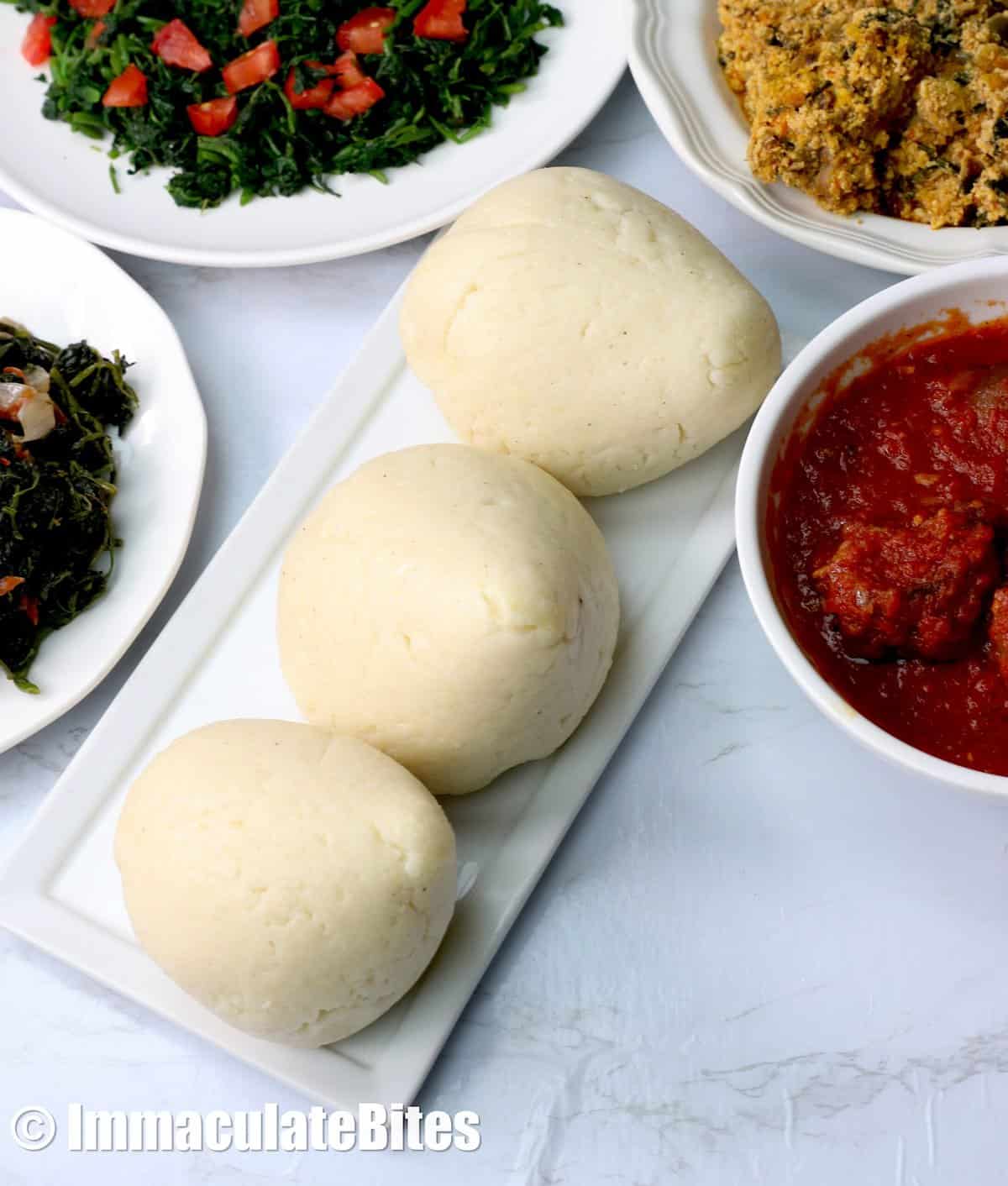
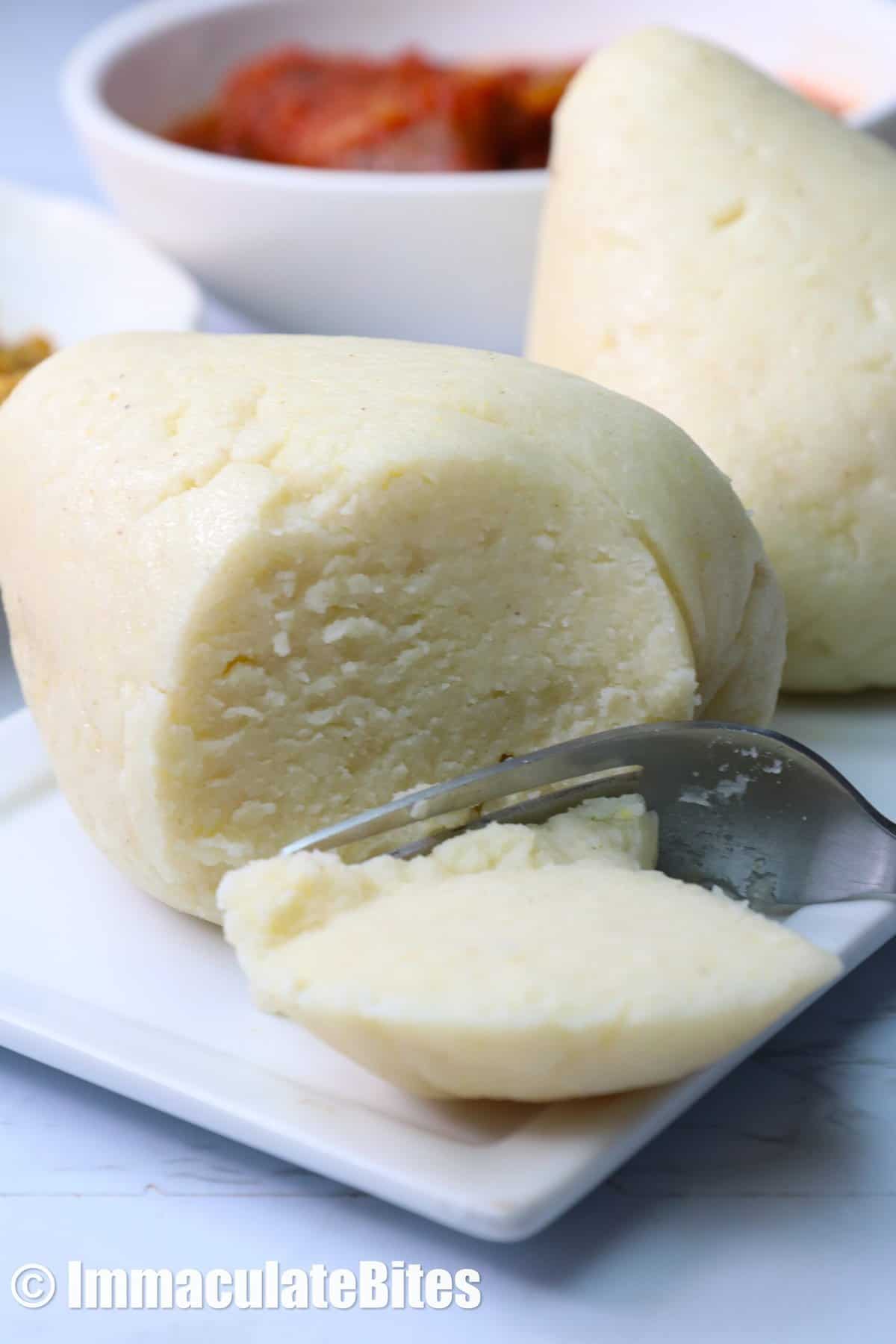
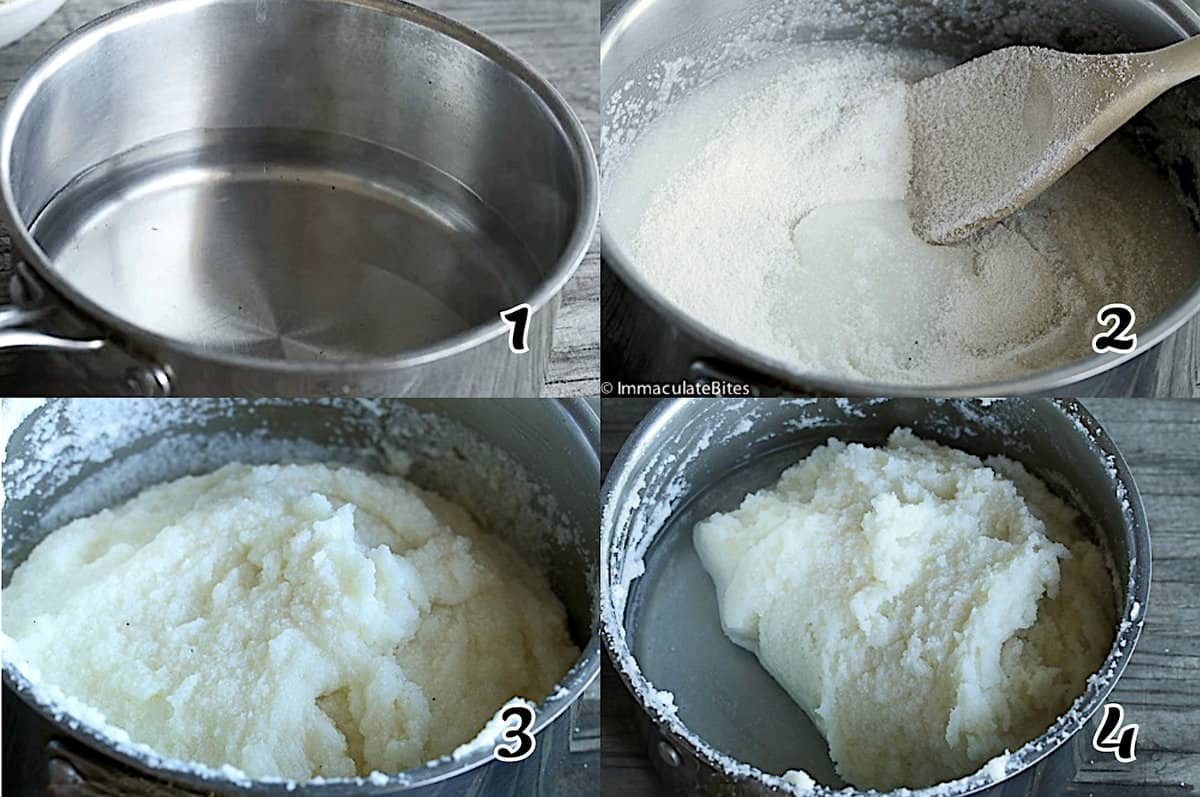
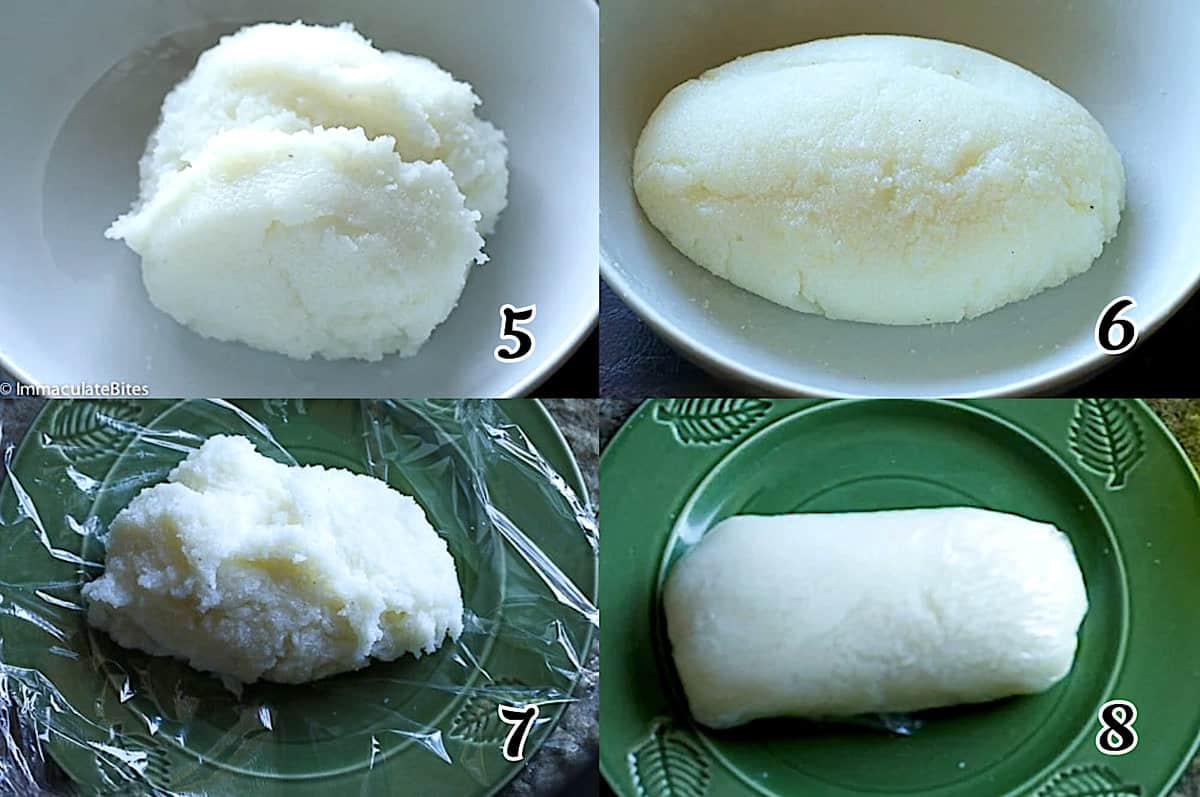
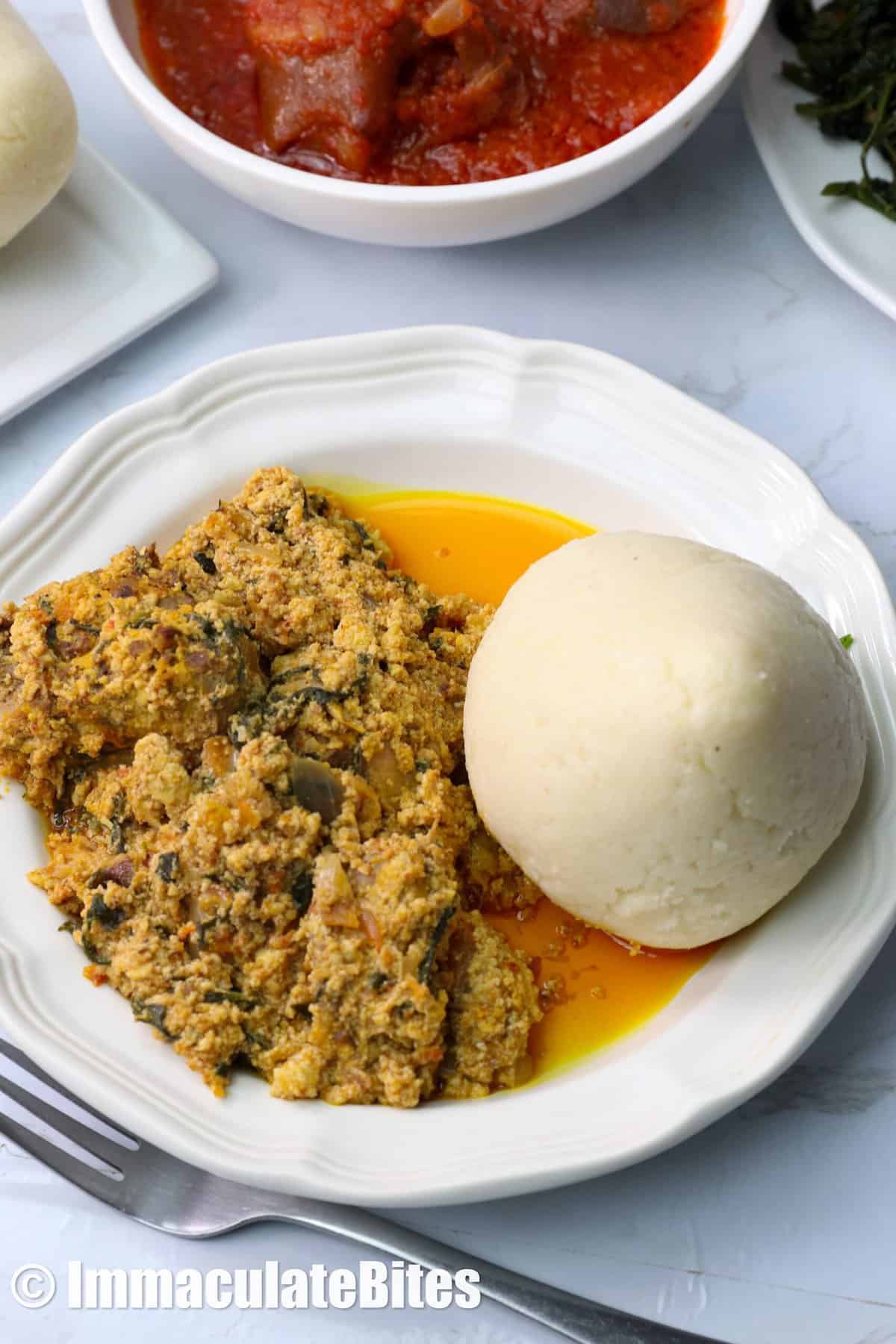
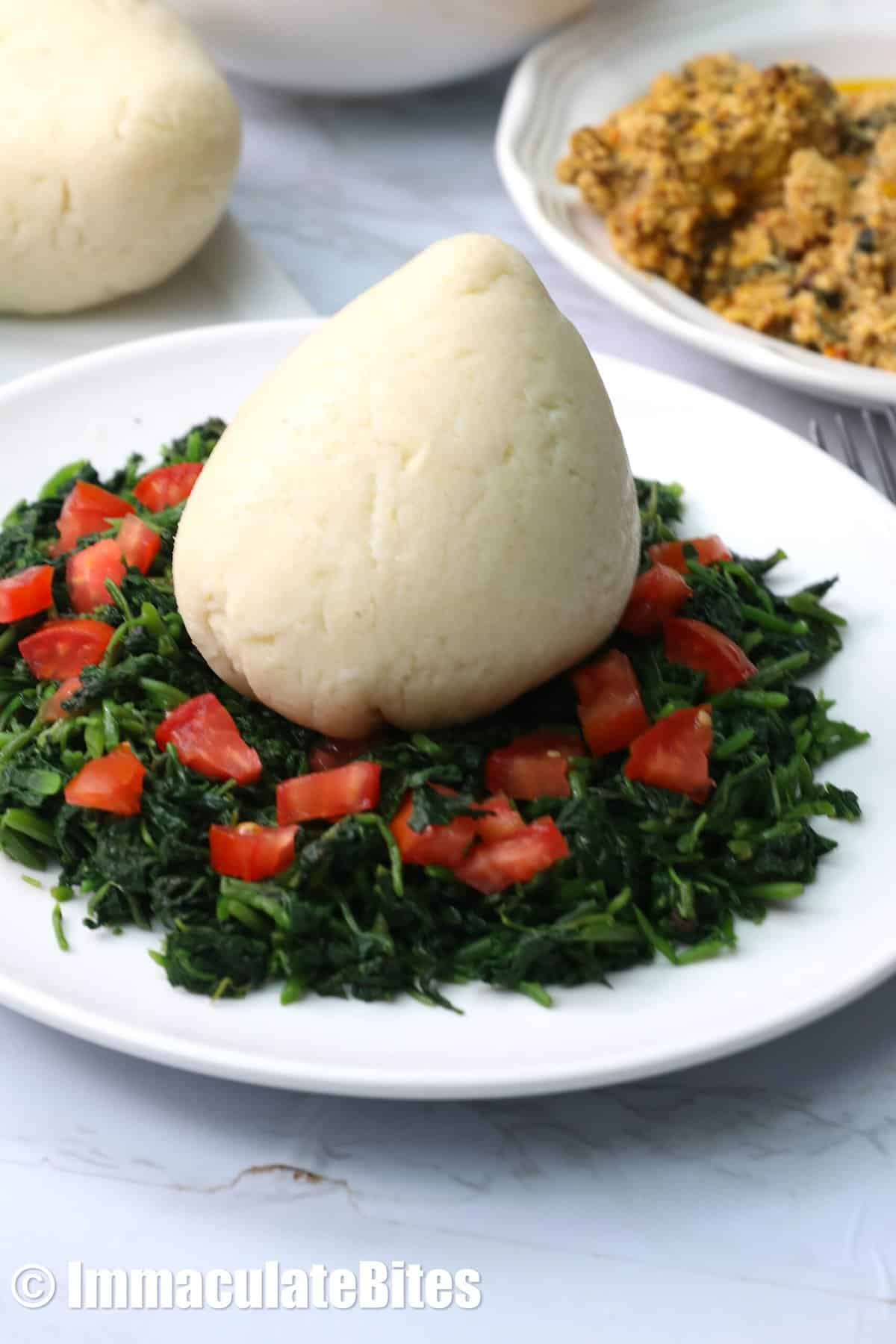
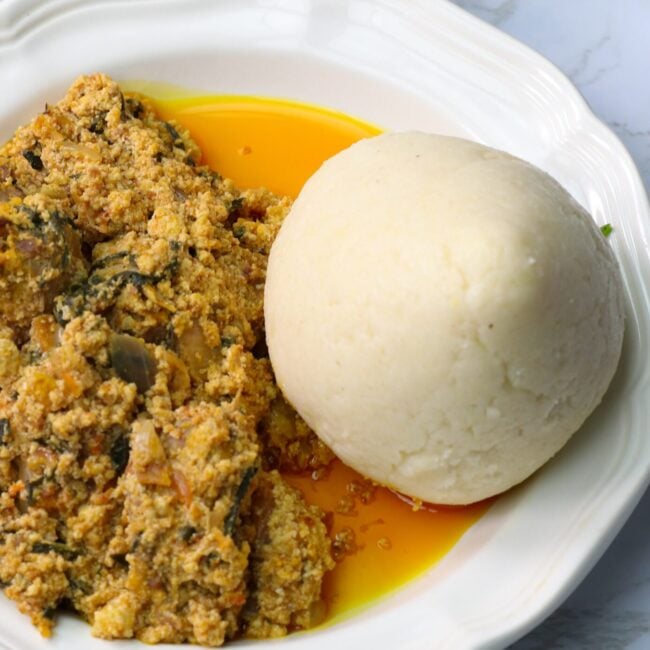


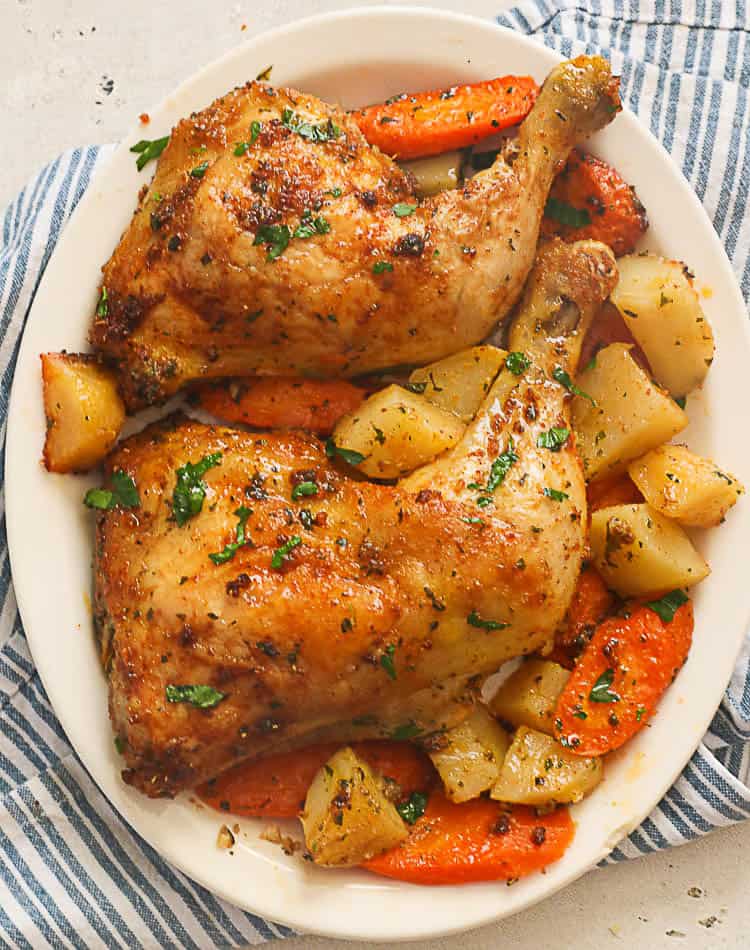
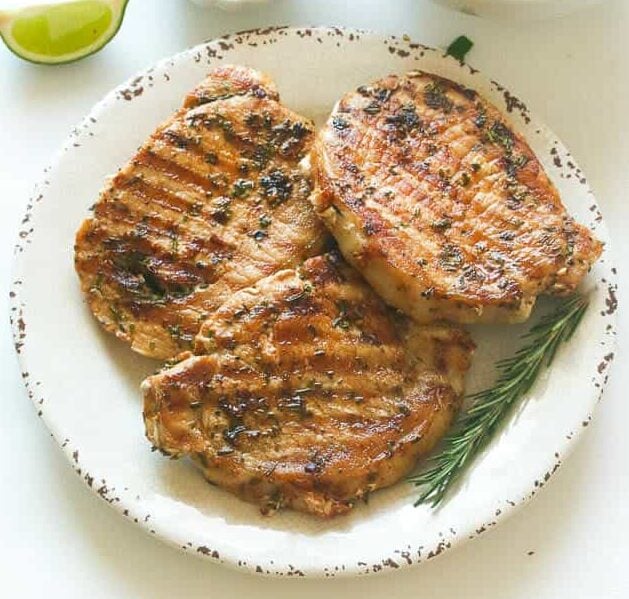
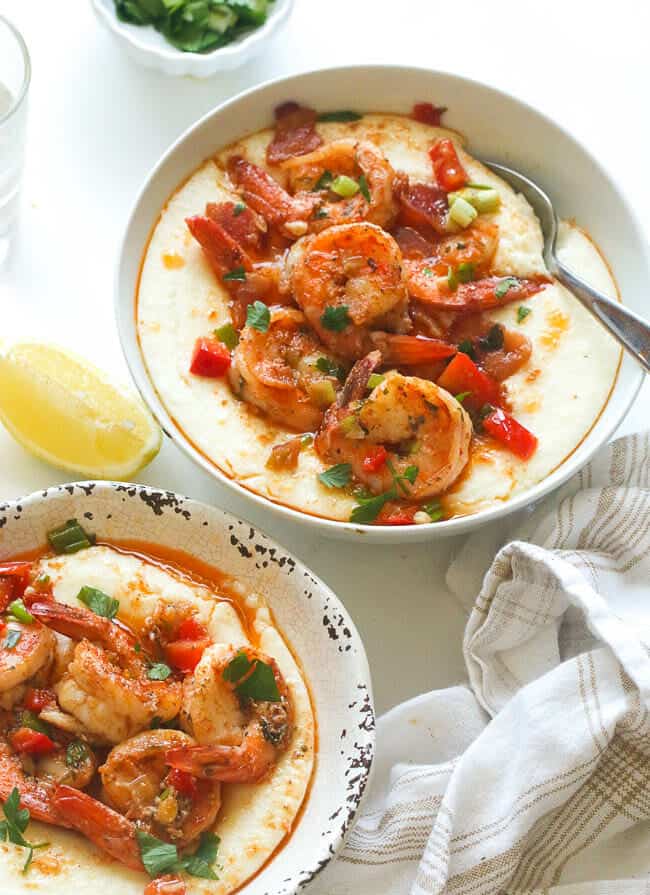
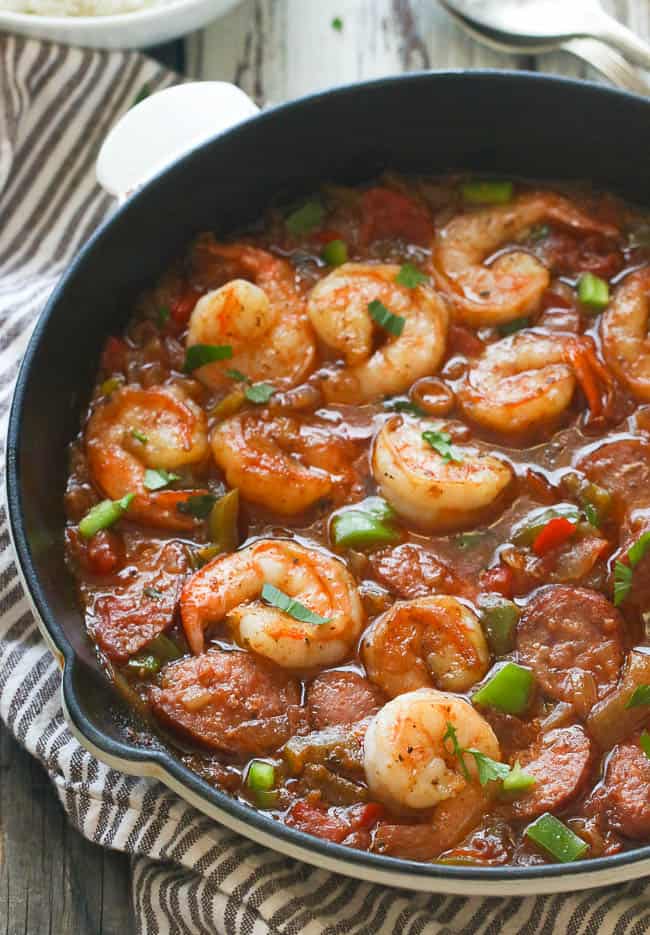
A friend from kenya says they do not put salt in it. The food that it accompanies should be salty enough to compliment the ugali. I found that when I made this first, without consulting my friend, that it seemed odd to have it salty. But you love and you learn.
Instead of trying to look for fine ground corn meal look for or ask for corn flour and it is easy to find even Walmart sells it. It will be in the Mexican cooking section as it is used to make Tamales. Think they stole the idea from Africans 🙂 If you don’t want FUFU you can always make Banku or Kenkey.
You think they stole the idea from Africans even though corn was first cultivated in the Americas, Mexico specifically, 8,700 years ago?
Those collards w/ the ugali sound perfect together!
Thank you! I love that combo.
Hiya,I am from U.K. Originally from India (Rajasthan). My Granny used to make white maize exactly the same but eaten with yogurt. Today I learnt a new way to eat it .
Great! It’s always good to have more than one way to enjoy a dish . Thanks for stopping by Ranjana!!
Isn’t Masa the same thing as the fine cornmeal?
It is the same , however, cornmeal varies from one region to another.
I like my ugali really thick, like you take the whole circle out and cut it like a pie! However ive never been the one to cook it, how would you recommend i get it that consistency?
You use less water- about 1/2 cup less. Have you given this a try? It’s really thick when it cools down.
I ADD one half of a stick of real butter just as my ugali gets thick. I don’t ADD any more water only the butter and the butter will ease the level of thickness to your desired texture. I also ADD a touch of freshly ground black pepper. You can’t imagine the good taste.
darrell
Bring on the butter! I can taste it from here . OH Boy!
Besides the fact that all corn is GMO in the U.S, it looks good!
Bon Appetit!
Thanks!!
I did not know that they also use salt in preparing corn fufu. Would try one day.
THANKS!
Nice. It’s all a matter of preference adjust to taste.
Reminds me of the batter used to make hot water cornbread. Add some sugar and fry.
Hi Rolanda! I love hot water cornbread. They sure are from the same family.
I am trying this out to celebrate the book THNGS FALL APART with my friends I hoe this turns out great
Hi Cheyanne! I don’t see why not- Love Things fall apart. I think it is about time I read it one more time.
Hi
not to offend any fufu purist but when i need some “plumbing” i grind oatmeal into flour and voilà! Oatmeal “fufu”. I have even tried it with bean flour! Makes for very interesting flavors as there are so many different beans.
God bless!
Hi Mbelu, No offense, to the fufu purist, though am not one of them ,but just recently started making Oat meal flour and it is quite delicious. However, I have never tried the bean flour. Another flour to experiment with. Thanks for sharing!!!
Question, how do you substitute the “Jiffy” mix in this recipe. “Jiffy” or some other type of cornbread mix is always in my pantry. Ugali also kind of looks like grits. Is the difference in the texture of the meal. Grits are probably courser, but in the picture it looks almost identical. So, interesting how the diaspora effected the food people of African descent eat throughout the western hemisphere. It’s really cool to be connected this way.
Hi Lisa, you replace corn meal with jiffy mix and proceed with the next steps.
Yes, grits are courser than the ones used in Africa,and some of the food prep is somewhat similar. Thanks for taking the time to comment.
I am Mexican married to an African.we make corn tortillas with this same flour.couldnt I just use this flour??
I don’t see why not.
So this is effectively the African equivalent of rice in Asia. Great to discover another carb staple!! I haven’t heard or seen of this before so thank you!
Ugali is one if the many forms of starch consumed on the continent of Africa, i.e. plantain, cassava, rice, etc.
From what I’ve seen, ugali is definitely the #1 staple starch here in Tanzania with rice a close second — although cassava, bananas, potatoes, sweet potatoes, yams and breadfruit are also common. People also make ugali-like mush with cassava, which is more flavorful but quite sticky.
Thanks for sharing your thoughts, Emma. I appreciate it.
This Ugali is looking so ooooooooo good! Love all the step-by-step instructions.